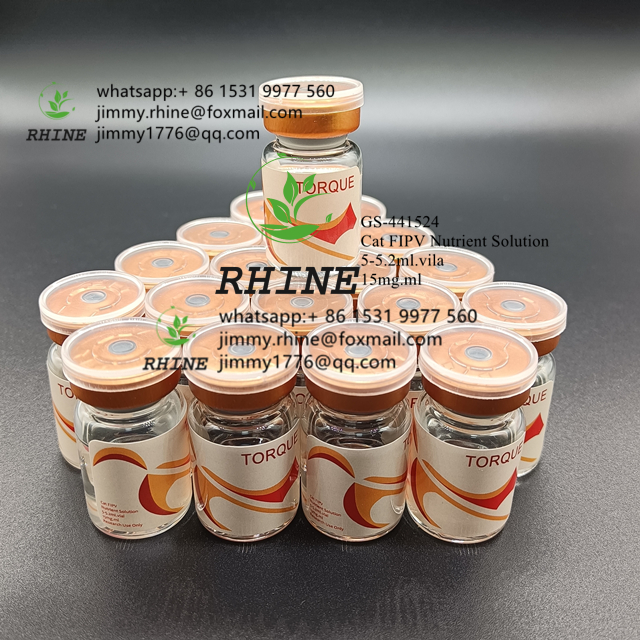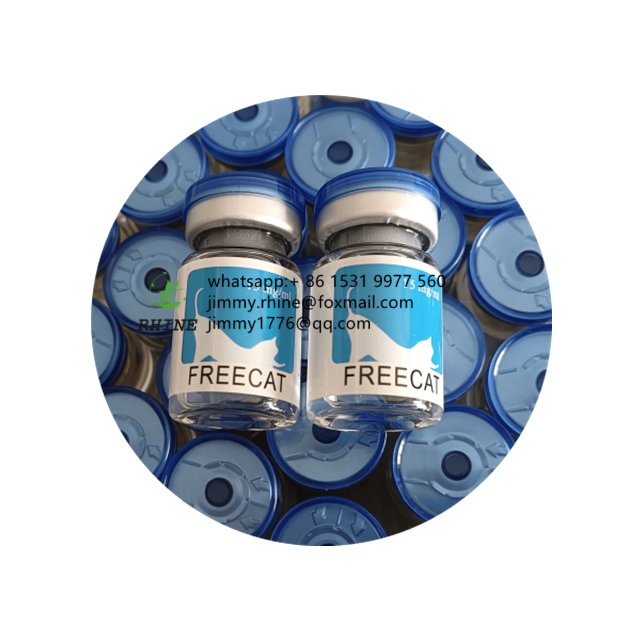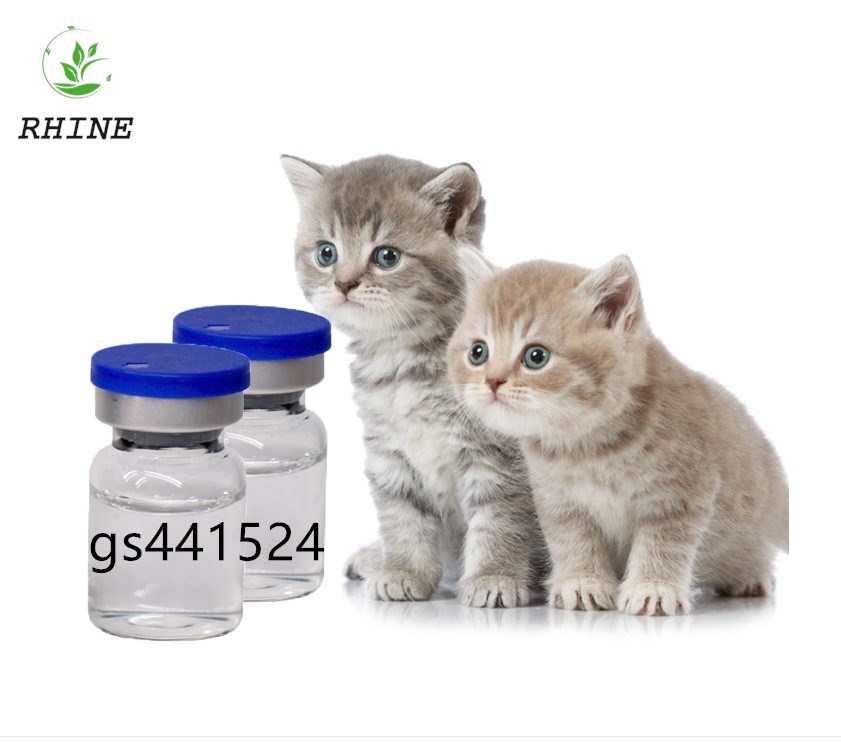With the rapid development of biotechnology, bioactive substances are continuously being utilized, and active substances produced by transgenic host (prokaryotic and eukaryotic) cells have been used as medicines, and more than 50 kinds of drugs approved at home and abroad have been developed. The number of hundreds of species, most of which are the chemical structure of protein and active polypeptide protein molecules determine the activity of its activities, there are many factors, mainly two aspects, one is the structural factors, including molecular weight, amino acid composition, amino acid sequence, there are No disulfide bond, disulfide bond position, spatial structure; second, environmental factors around the protein molecule, protein! Polypeptide is affected by complex physics! Chemical factors, condensation, precipitation, hydrolysis, deamidation, etc. There are more than 20 kinds of genetic engineering drugs and vaccines, most of which are lyophilized preparations. The reason is that lyophilized preparations can maintain protein for a long time! The activity of peptides Therefore, lyophilization technology is an important link in the development of new drugs.
After joining the WTO, global integration, market opening, and drug secondary processing market are developing rapidly. Outsourcing has become a practice in the European and American pharmaceutical industry. According to reports, the global drug outsourcing market reached US$30 billion in 2003. The estimated annual expenditure of 340-350 billion US dollars is about 26% of the entire drug outsourcing market. The rest is the outsourcing processing of APIs. After the 1990s, the entrusted processing of APIs (order processing APIs) has been technically more demanding. To improve the processing grade of APIs, that is, the big companies will hand over the new drugs (raw materials) they developed to research and development companies with strong scientific and technological strength, and the latter will introduce new drugs (especially protein/peptide drugs and anti-drugs). Viral drugs! Anticancer drugs, etc.) processed into nano-sized preparations! Freeze-dried powder needles! Oral fast-dissolving tablets! Aerosol/dry powder inhalers, and other novel drug delivery routes. The new target of secondary processing freeze-dried injection is one of the important technical products, such as DSM in the Netherlands, which is a famous European secondary processing enterprise, specializing in the processing of antifreeze raw materials for freeze-dried powder injections in 2004, US$62 million to expand the production capacity of freeze-dried powder injections (11 sets of super-large freeze-drying machines, each covering more than 30 m2), becoming the largest powder injection production company in Europe. PATHEON of Canada is the main pharmaceutical secondary processing enterprise in North America. The main business of processing freeze-dried powder injections. The company cooperated with Italy to establish a large-scale freeze-dried powder injection production base in Italy. A large-scale freeze-drying device covers an area of ​​271m2. It can be seen that freeze-drying technology is not only an important factor in the production of genetic engineering drugs. Links, and the advantages of its technology can develop into an industry.
This article will combine the genetic engineering of peptide and protein drug lyophilized injection production, combined with the center's pilot work, for discussion, for peer reference.
1 Principle and application of freeze drying technology
(1) Principle
Freeze-drying means freezing the drug at a low temperature, then sublimating and drying under vacuum, removing the ice crystals, and then desorbing and drying after the sublimation is finished, and removing the partially combined water drying method. The process can be mainly divided into medicine preparations! Pre-freezing! One drying (sublimation drying)! Secondary drying (desorption drying)! Sealing and other steps The ordinate on the ordinate is air pressure, the abscissa is temperature, and 0 °C (actually 0.001 °C) is a triple point, indicating that water is liquid. The lowest atmospheric pressure at the time of existence, below which the water can only exist as ice or steam, that is, when the temperature is raised at this time, the water can only be directly changed from ice to steam, and lyophilization is much lower than the pressure (high vacuum) Under the condition of dry water, usually under the vacuum of 66~133Pa and below -25 °C, the freeze-drying can be carried out smoothly.
(2) Advantages and disadvantages
Freeze drying has the following advantages over other drying methods:
1) The liquid medicine is divided before the freeze-drying, and the dispensing is convenient! Accurate! Continuous can be realized;
2) mild treatment conditions, drying under low temperature and low pressure, is beneficial to the heat-sensitive substance to maintain activity, can avoid decomposition and denaturation under high temperature and high pressure, so as to achieve protein denaturation;
3) The water content is low, the water content of the freeze-dried product is generally between 1% and 3%. At the same time, it can be dried and preserved under vacuum and even under the protection of N2. The product is not easily oxidized, which is beneficial to long-distance transportation and long-term storage;
4) The product has excellent appearance, is porous and loose structure, and the color is basically unchanged. The rehydration is good, and the freeze-dried drug can quickly absorb water and return to the state before lyophilization;
5) The freeze-drying equipment is closed, the installation environment is clean, the pollution of bacteria and particles is reduced, and the lack of oxygen after drying and packaging can sterilize and inhibit the vitality of certain bacteria.
Shortcomings and deficiencies of freeze drying and products:
1) High equipment requirements! Great investment! Low drying rate! Long drying time! High energy consumption;
2) Bioactive substances (such as peptides and protein drugs) use lyophilized preparations mainly to maintain activity, but the ingredients (such as protective agents! Solvents! Buffers, etc.) are unreasonable! Process operation is unreasonable! Frozen [XW: PAGE] Inappropriate selection of dry equipment may be inactivated during the preparation of the lyophilized preparation, resulting in the product being completely discarded. This is the key to the production of lyophilized preparations, basic research and repeated trials for specific products are required;
3) Solvents cannot be selected arbitrarily. They are limited to water or some organic solvents with higher freezing point. Therefore, it is difficult to prepare a special crystal form. Sometimes the lyophilized product will appear turbid when it is dissolved in rehydration. Preparation must be considered and experimentally studied.
(3) Application of freeze drying technology
The freeze-drying technique was invented by the Englishman Wallaston in 1813. In 1909, the Shsckell test used this method to fight toxins! The strain! The rabies virus and other biological products were freeze-dried and preserved, and achieved good results in the Second World War due to The large demand for blood products, freeze-drying technology has been rapidly developed and entered the industrial application stage. The large-scale development of freeze-dried food systems in the 1950s has promoted the advancement of freeze-drying technology and equipment, but it has experienced decades of ups and downs due to high difficulty, high investment, high energy consumption and backward manufacturing equipment. In the past 20 years, with the improvement of people's living standards, the quality of food! Nutrition! The concept of natural pollution-free change has promoted the development of freeze-drying technology. The production process is from intermittent to continuous, and the equipment is from 0.1m2 to thousands. The m2 series is used in a wide range of applications: in scientific research, in the analysis of components such as soil analysis; in the removal of solvents from high-performance liquid chromatography; the important artifacts found in archaeology such as cloth, leather, bamboo, etc. In industry, it is applied to freeze-dried foods such as vegetables! Fruits! Seafood! Even flowers, etc.; spices and condiments such as coffee! Tea and various spices! Seasonings; convenience foods that preserve nutritious health ingredients and color and flavor (Japan 50% of convenience foods are freeze-dried foods; the most widely used aquatic products! The most demanding applications are in pharmaceuticals and biological products, mainly in serum! Strain! Genetic engineering drugs! Vaccines! Natural medicines and biological products In the 2000 version of the Chinese Biological Products Regulations, 8 of the 11 recombinant therapeutic protein drugs identified are lyophilized preparations, such as recombinant human interferon α1b! Recombinant human interferon α2b! Recombinant human interferon α2b! Recombinant human interferon γ ! Recombinant Human Interleukin 22! Recombinant Human Erythropoietin! Recombinant Human Granulocyte Macrophage Colony Stimulating Factor! Recombinant Streptokinase
Production process of cold dry preparation
The genetically engineered polypeptide and the protein drug lyophilized preparation are obtained by culturing the host (microorganism or animal cell) to obtain an expression product! The active substance is obtained by separation and purification, and is prepared, filtered, and dispensed, and the packaged sample is sent to the freeze dryer. Pre-freezing! Sublimation! Drying, final sealing Therefore the production process of the lyophilized preparation includes drug preparation! Pre-freezing! One drying (sublimation drying) and secondary drying (desorption drying)! Sealing and other five steps. The details will be described below.
For the development of new products, it is necessary to determine the lyophilization process conditions through experiments. After the drug is prepared, the eutectic point of the aqueous drug solution is determined. The eutectic point is important for freeze-drying because the liquid is a complex liquid. When the temperature drops to a certain temperature, the crystal begins to precipitate. As the temperature drops, the number of crystals increases, and finally it condenses. At this time, the temperature is called the co-coagulation point. If the temperature rises from the freezing state to the coagulation point, the melting starts, and the solute and The eutectic point of the solvent. Different materials have different eutectic points, such as 0.85% sodium chloride solution -21.2 ° C, and 10% glucose solution is -27 ° C eutectic point measurement by thermal analysis method; resistance method and direct observation by low temperature microscope. The thermal analysis method is based on the freezing of the drug during the heating process, when the temperature reaches the eutectic point, there will suddenly be an absorption of energy. The thermal absorption meter can be used to determine the energy absorption peak to calculate the eutectic temperature; the resistance method is to cool down or After the freezing, the resistance suddenly becomes larger or smaller, and the resistance change of the non-ionic organic compound is not obvious. A certain amount of additive can be added to determine that the freeze-drying is carried out under vacuum, and only the liquid is all After freezing, it can be sublimated under vacuum. Otherwise, when some liquid is present, it will not only evaporate rapidly under vacuum, causing the liquid to concentrate, causing the freeze-dried product to shrink, and the gas dissolved in the water will quickly emerge under vacuum, causing liquid Boiling, even emerging from the lyophilized bottle, so the temperature of the lyophilized product at the beginning of sublimation must be lower than the eutectic, all frozen.
The freeze-drying time is generally long. In order to ensure product quality and shorten the production cycle, it is necessary to determine the freeze-drying curve through trial and error, because the freeze-drying effect is measured by the activity retention rate of the lyophilized preparation and the original liquid, and the activity preservation rate is It is related to the freeze-drying curve and the composition and ratio of the liquid. Therefore, it is necessary to repeatedly test to optimize and determine.
Feline Infectious Peritonitis (FIP), referred to as Feline Infectious Peritonitis (FIP), is a fatal abnormal immune response that occurs in cats. It is caused by the mutation of the feline coronavirus carried by cats. As a high-incidence and fatal disease of pet cats, the current incidence of feline abdominal transmission is about 10%.

The symptoms of cats are usually divided into two categories, namely wet FIP and dry FIP, of which wet FIP accounts for the majority of all cases. About 70%, manifested as abdominal pleural effusion, abnormal bulging; dry FIP cats have different symptoms, depending on the type of organ affected by the virus.

So far, all feline feline feline treatments are based on the characteristics of the disease, and GS-441524 can play a role in the treatment of feline feline disease. Therefore, the therapeutic effect of GS-441524 is obviously more ideal, the dose used is less, the treatment cycle is shorter, and the efficacy, safety and convenience of operation are all good. Because of this, GS-441524 is considered by many pet owners and veterinarians to be a magic medicine that can effectively treat feline abdominal infection.

Gs 441524 Fip,Fip Treatment Gs441,Gs 441524 Fipv Cats,Gs 441524 For Fip
XI AN RHINE BIOLOGICAL TECHNOLOGY CO.,LTD , https://www.xianrhinebiotech.com